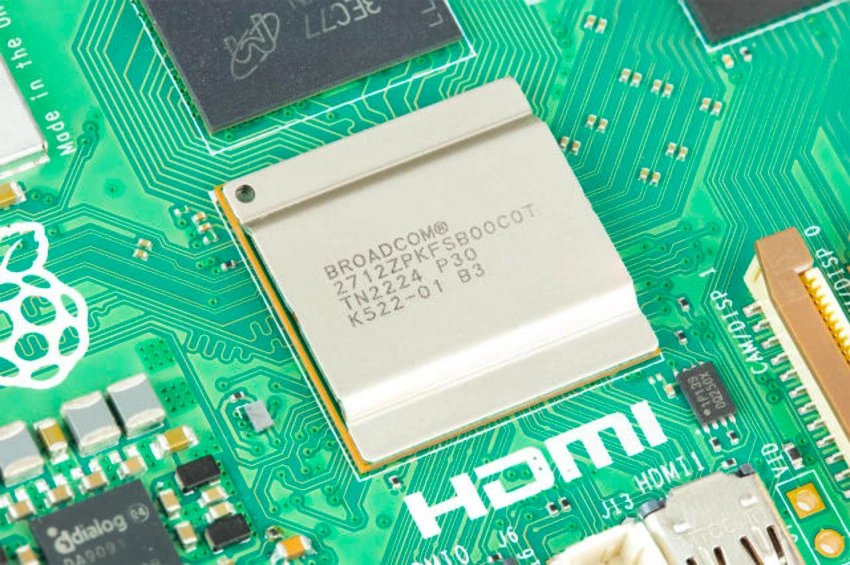In a long-awaited and highly anticipated release, the Raspberry Pi Foundation has unveiled the Raspberry Pi 5 four years since the launch of its predecessor, the Raspberry Pi 4. This latest iteration comes with a performance boost that promises to redefine what we can achieve with a tiny yet powerful device, all while introducing in-house silicon and support for PCIe 2.0. Let’s dive into the exciting world of the Raspberry Pi 5!
A Powerhouse at its Core
The Raspberry Pi 5 draws its amazing computing power from a 64-bit quad-core Arm Cortex-A76 processor, clocked at an impressive 2.4GHz. This powerhouse processor offers a remarkable two to three times the performance of its predecessor, the Raspberry Pi 4. But that’s not all: it also features an 800MHz VideoCore VII graphics chip, delivering a substantial uplift in graphics performance that promises a richer visual experience.
A Speedy Start and Web Browsing
The Raspberry Pi 5 gets right to business with its lightning-fast boot-up time. Compared to the trusty Raspberry Pi 3 Model B+, the latest iteration is a pocket rocket. Even web browsing, a task that can sometimes be sluggish on older models, is a breeze on the Raspberry Pi 5. However, it’s worth noting that this increased performance can generate some heat, but fear not: Raspberry Pi includes an active cooling component that you can easily mount on the board to keep things running smoothly.
Meet the RP1 Southbridge
One of the most exciting additions to the Raspberry Pi 5 is the RP1 southbridge, a component developed in-house by the Raspberry Pi Foundation. This crucial part of the chipset enhances communication with peripherals, resulting in a significant boost in peripheral performance and functionality. This means faster data transfer speeds to external UAS drives and other peripherals, making your projects run smoother and more efficiently.
Expanded Connectivity Options
The Raspberry Pi 5 takes connectivity to the next level with two four-lane 1.5Gbps MIPI transceivers. This allows you to effortlessly connect up to two cameras or displays. For the first time, there’s also a single-lane PCI Express 2.0 interface, offering support for high-bandwidth peripherals. To take advantage of this feature, you’ll need a separate adapter, such as an M.2 HAT (Hardware Attached on Top).
A Wealth of Ports and Features
In terms of ports and features, the Raspberry Pi 5 leaves nothing to be desired. It boasts dual 4Kp60 HDMI display outputs with HDR support that ensure stunning visuals. You’ll also find a microSD slot, two USB 3.0 ports, two USB 2.0 ports, gigabit ethernet for lightning-fast networking, and a 5V DC power connection via USB-C.
Additionally, the device supports Bluetooth 5.0 and Bluetooth Low Energy (LE), offering expanded wireless capabilities. The peak SD card performance, doubled with the SDR104 high-speed mode, guarantees smooth and responsive operation.
Flexible RAM Options
The Raspberry Pi 5 offers flexibility with its RAM options. At launch, you can choose between the 4GB version priced at $60 and the 8GB version for $80. While this makes it slightly more expensive than the Raspberry Pi 4, the added performance and innovative features make it a compelling choice for a wide range of applications.
Availability
Excitingly, the Raspberry Pi 5 will be available for purchase before the end of October. Whether you plan to use it as an ultra-budget desktop PC, a media server, or a DIY security system, the Raspberry Pi 5 promises to deliver an exceptional computing experience.
The Raspberry Pi 5 is a game-changer in the world of microcomputers, offering a tantalizing blend of performance, innovation, and versatility. With its impressive hardware upgrades and in-house silicon, it’s set to redefine what you can achieve with a compact yet mighty device. Stay tuned as we delve deeper into the endless possibilities that the Raspberry Pi 5 brings to the table!

